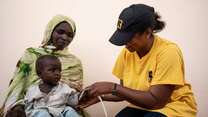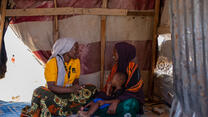Humanitarian organizations do not routinely use cost data to compare the efficiency or effectiveness of different interventions and delivery models, and as a result policy makers and practitioners have little data with which to make infromed decisions about where to spend in a humanitarian response. The International Rescue Committee (IRC) is committed to maximizing the impact of each dollar spent to improve clients' lives. If we have better information about the cost efficiency and cost effectiveness of our interventions, we will be more effective at doing so.
To ensure that the IRC is making the best use of its resources, the organization is undertaking cost analyses of key interventions for use in our programming decisions and advocacy work. To compare the costs of a program against the outputs it produces, the IRC is conducting cost efficiency analyses, which compare the costs of a program to the impact that program caused. Both cost efficiency and cost effectiveness enable practitioners to make comparisions across programs and discern the approaches that make the most progress towards humanitarian objectives for a given cost. Because the goal of such calculations is comparative, it is essential to use a consistent methodology to calculate the total costs and total outputs of a program.
Available documents & links
The IRC’s unconditional cash transfer programs range in cost efficiency from 14 cents for every dollar transferred up to $1.32 for every dollar transferred.
This analysis covers six IRC case management programs in five countries and includes programs providing services within refugee/IDP camps and in urban settings.
This analysis seeks to examine whether there are latrine-building programs that deliver the same output at different costs.
This analysis examines six legal case management projects in Iraq to asses whether local partners are more cost efficient than large international NGOs.
This analysis considered seven NFI distribution programs from six countries, examining the cost of each program per dollar of value transferred, and how cost efficiency is influenced by programmatic and contextual features.
The analysis examines eight community management of acute malnutrition programs, looking at how variations in program features, as well as differences in the contexts in which these programs were run, impacted their cost efficiency.
This brief explores the relative costs of running teacher professional development activities across nine programs in Afghanistan, Iraq, Lebanon, and Pakistan.
This analysis examines the cost efficiency of two small-scale pilot parenting programs aimed at reducing violence and insecurity children might face within their homes.
This analysis examines the cost effectiveness of the ingredients necessary and cost per person and cost per outcome achieved from a six-day governance leadership training course in Zimbabwe.
We need effective design, delivery and evaluation of humanitarian assistance to not only develop and apply tools and processes that are based on or generate evidence, but also track how much it costs to deliver outcomes and inform future responses.



